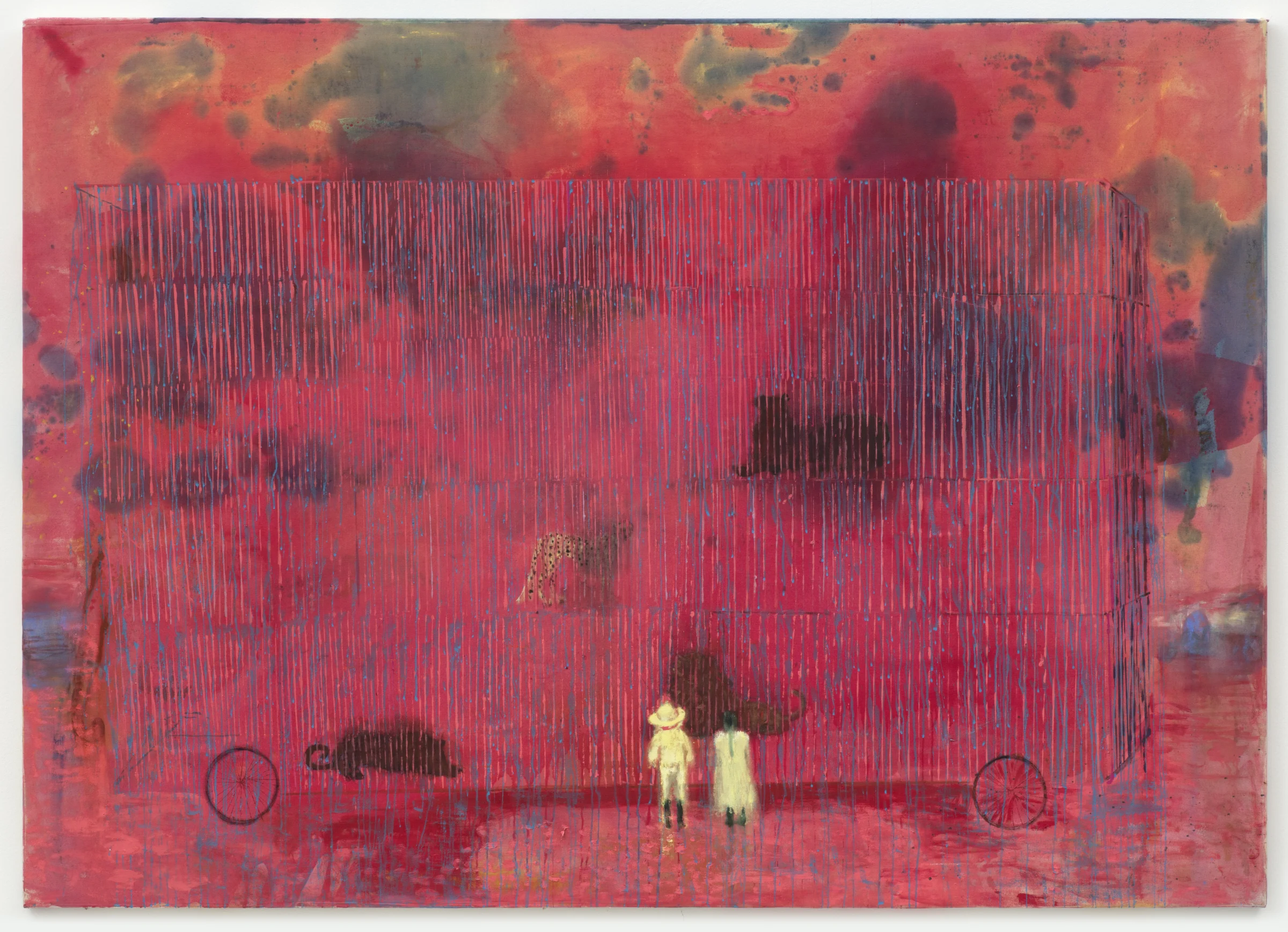Andrew Cranston is a storyteller of sorts, without a clear story to tell. His work is seductive in terms of its use of narrative and humour, but it is the humour of Samuel Beckett or Buster Keaton, always touching on the strangeness and pathos of ordinary life. He draws on a variety of sources, in particular his own personal history; questioning the veracity of memory. This autobiographical activity is combined with passages culled from literature, anecdotes and jokes, second-hand accounts, images from cinema and observations of life. Often working directly onto hardback book covers his work is not pre-conceived but emerges through the manipulation of materials – paint, varnish, collage – and the suggestions that this activity provokes, layering and re-working the images until something essential coalesces. As Liza Dimbleby has written in a recent essay “the images that are encouraged to surface are sometimes taboo; sex and solitude, death, nightmares – the ultimate questions, not without a sly humour.”
Andrew’s work is housed in collections around the world, including: Loewe Foundation, Madrid, Spain; He Art Museum, Shunde, China; the Huamo Museum, Suzhou, China; Royal College of Art, London, UK; Unilever Collection, London, UK; Hawick Museum, Royal Scottish Academy, Edinburgh, UK; National Gallery of Scotland, UK; Art Gallery of New South Wales, Sydney, Australia; Hall Art Foundation, Vermont, USA; Institute of Contemporary Art, Miami, USA; Portland Art Museum, Oregon, USA and the Aishti Foundation, Beirut.
